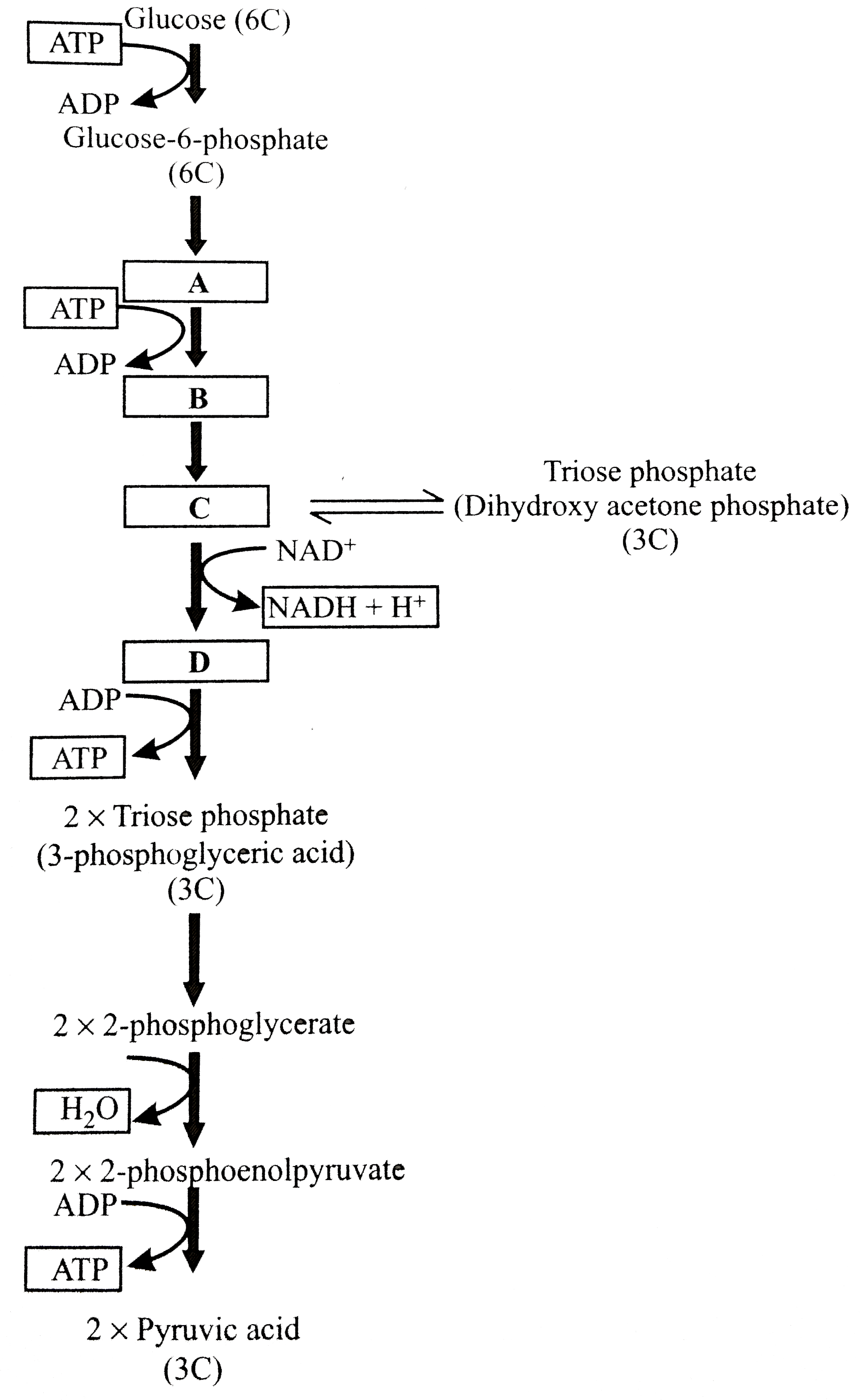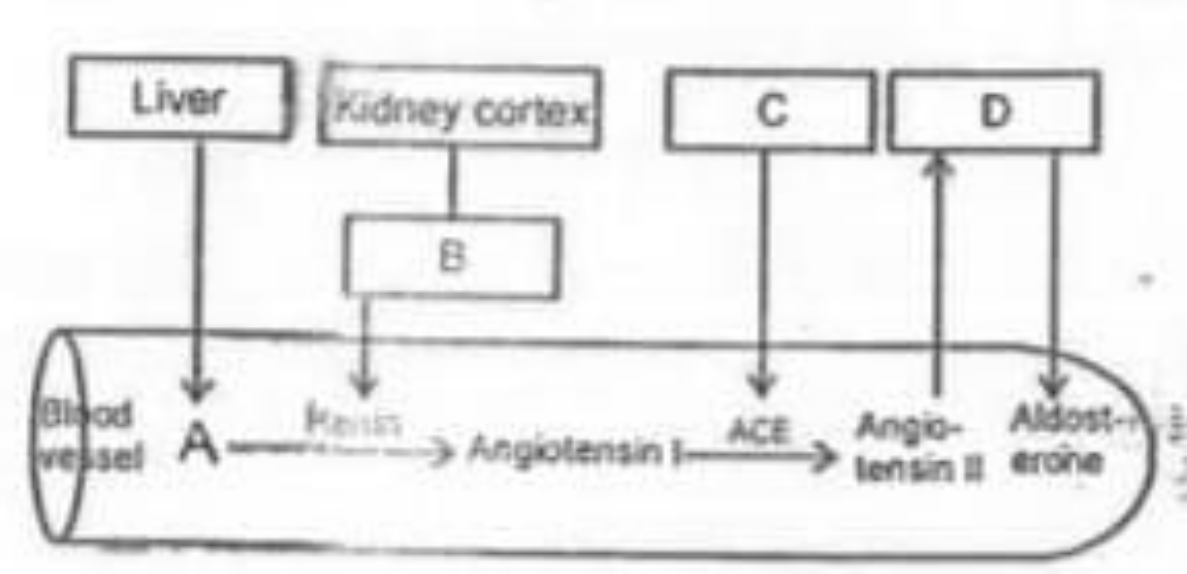Consider the following statements (A-D) and select the option which correctly fills the blacks.
A. A group of species belonging to a trophic level that exploits a common resources base in a similar fashion is known as (i).
B. (ii) reduces decomposition and causes the Pilling up of detritus.
C. In oceans, productivity is limited by (iii) and (iv).
D. The largest reservoir of calcium is (v).
(i)(ii)(iii)(iv)(v)GuildOxygenNitrogenLightRocks
(i)(ii)(iii)(iv)(v)GuildAnaerobic conditionLightNitrogenRocks
(i)(ii)(iii)(iv)(v)GuildAnaerobic conditionPhorphorusDarkSoil
(i)(ii)(iii)(iv)(v)GuildAnaerobic conditionNitrogenLightSoil
The correct Answer is:B
To solve the question, we need to fill in the blanks (i) to (v) in statements A to D correctly. Let's analyze each statement step by step.
Step 1: Analyze Statement A
Statement A: A group of species belonging to a trophic level that exploits a common resource base in a similar fashion is known as (i).
- Explanation: In ecology, a group of species that share the same trophic level and utilize resources similarly is referred to as a "guild."
Fill in the blank: (i) Guild
Step 2: Analyze Statement B
Statement B: (ii) reduces decomposition and causes the piling up of detritus.
- Explanation: Decomposition requires oxygen. When oxygen is absent, the process of decomposition is hindered, leading to the accumulation of detritus. The condition that reduces oxygen availability is "anaerobic."
Fill in the blank: (ii) Anaerobic
Step 3: Analyze Statement C
Statement C: In oceans, productivity is limited by (iii) and (iv).
- Explanation: In marine environments, the primary factors that limit productivity are light (due to depth and turbidity) and nutrients, particularly nitrogen.
Fill in the blanks: (iii) Light, (iv) Nitrogen
Step 4: Analyze Statement D
Statement D: The largest reservoir of calcium is (v).
- Explanation: The largest reservoir of calcium in the environment is found in rocks, particularly limestone, which is composed primarily of calcium carbonate.
Fill in the blank: (v) Rocks
Final Answers
Now, we can summarize the filled blanks:
- (i) Guild
- (ii) Anaerobic
- (iii) Light
- (iv) Nitrogen
- (v) Rocks
Complete Statements
A. A group of species belonging to a trophic level that exploits a common resource base in a similar fashion is known as Guild.
B. Anaerobic reduces decomposition and causes the piling up of detritus.
C. In oceans, productivity is limited by Light and Nitrogen.
D. The largest reservoir of calcium is Rocks.
Statement A: A group of species belonging to a trophic level that exploits a common resource base in a similar fashion is known as (i).
Statement B: (ii) reduces decomposition and causes the piling up of detritus.
Statement C: In oceans, productivity is limited by (iii) and (iv).
Statement D: The largest reservoir of calcium is (v).
Now, we can summarize the filled blanks:
- (i) Guild
- (ii) Anaerobic
- (iii) Light
- (iv) Nitrogen
- (v) Rocks
A. A group of species belonging to a trophic level that exploits a common resource base in a similar fashion is known as Guild.
B. Anaerobic reduces decomposition and causes the piling up of detritus.
C. In oceans, productivity is limited by Light and Nitrogen.
D. The largest reservoir of calcium is Rocks.
Similar Questions
Knowledge Check
Read the following statements and select the correct ones.
(i) A given species may occupy more than one trophic level in the same ecosystem at the same time.
(ii) Productivity of an aquatic ecosystem is less than that of a terrestrial ecosystem.
(iii) Producers constitute the first trophic level of a detritus food chain.
A) i and ii
B) ii and iii
C) i and iii
D) i, ii and iiiAI and iiBii and iiiCI and iiiDI,iiand iiiThe flow chart given below shows the steps in glycolysis. Select the option that correctly fills in the missing steps A,B,C and D.
 AABCDFructose-6-phosphateFructose-1-6-biphosphate3−PGAL1.3−biphospho-glyceric acidBABCDFructose-1,6-biphosphate3-PGAL1.3−biphospho-glyceric acidCABCD3-PGA1,3-biphospho-glyceric acid 3−PGALFructose-1 ,6-biphosphateDABCDFructose-1,6-biphosphateFructose-6-phosphate3−PGAL1,3-biphospho-glyceric acid
AABCDFructose-6-phosphateFructose-1-6-biphosphate3−PGAL1.3−biphospho-glyceric acidBABCDFructose-1,6-biphosphate3-PGAL1.3−biphospho-glyceric acidCABCD3-PGA1,3-biphospho-glyceric acid 3−PGALFructose-1 ,6-biphosphateDABCDFructose-1,6-biphosphateFructose-6-phosphate3−PGAL1,3-biphospho-glyceric acid
Which of the following options correctly identifies the plants shown in figure and the group it belongs to?AMarchantia-LiverwortBSphagnum-MossCSphangum-liverwortDFunaria-Moss
Given below is flow chart of RAAS:

choose the option which correctly fills the blanks labelled as A,B,C and D
View SolutionGiven below are four statements ( A-D ) each with two blanks. Select the option which correctly fills up the blanks in two statements.
I.1100-1200
II. 1/5th
View SolutionConsider the following four statements (A-D) and select the correct option stating which ones are true (T) and which ones are False (F).
(A) Vertical distribution of different species occupying different levels in a community is called stratification.
(B) Net primary productivity minus respiration losses is the gross primary productivity.
(C) Rate of biomass production is called decompostion.
(D) Annual net primary productivity of oceans is 55 billion tons.
View SolutionConsider the following statements
In an ecosystem energy
(i) Movement is unidirectional
(ii) Is lost irretrievably
(iii) Movement is non-cyclic
(iv) Movement is from higher to lower trophic levels
Of these statements
View SolutionRead the following and select the correct option :
A. Carnivora is a/an (i) that involves (ii) and Canidae.
B. Petunia and (iii). belongs to Family (iv)
View Solution

